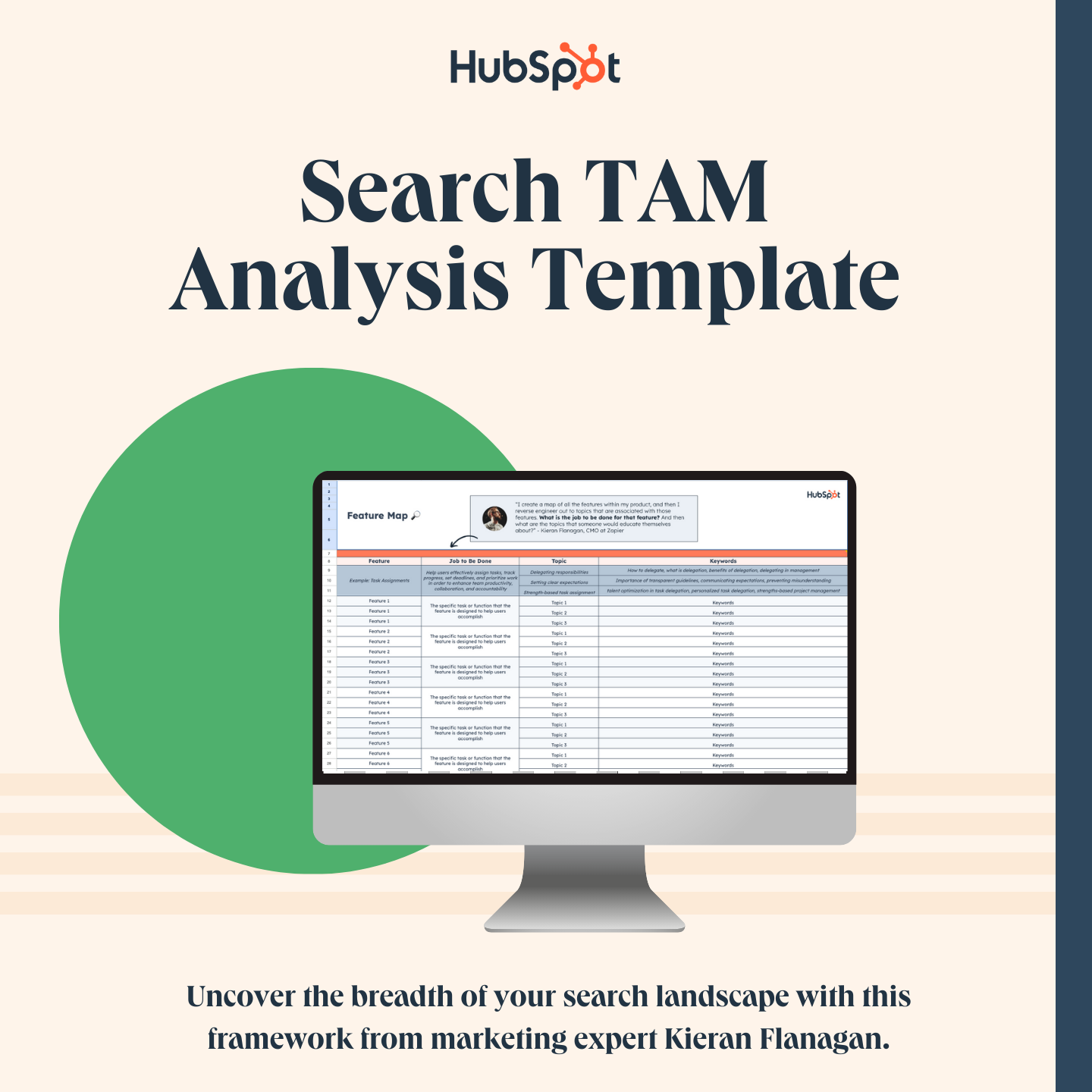Most CMOs are familiar with the concept of Search TAM, but from my experience, most marketers artificially limit their opportunities when calculating it. Kieran and I recently dove deep on how we calculate Search TAM in an episode of Marketing Against the Grain.
Before going into the specifics, let’s first cover why paid ads typically won’t scale forever.
Why Paid Advertising Doesn’t Work Forever
Most of the reasons to deviate from paid advertising come down to cost. After all, paid advertising gets more expensive as it scales.
As Kieran shared in our recent episode, you can scale paid ads indefinitely if the unit economics are in your favor. For most companies, if you continue to scale the channel will saturate.
To put some numbers behind it, let's say you’re spending $100K per month on paid media to generate demand. A year from now, you’re not going to be spending $200K per month and getting twice as many leads. You’re going to be spending $200K to get 50% more leads. It's key to diversify before that point.
Organic marketing isn't like paid ads, it's not about direct LTV to CAC. Instead, it's about diversifying marketing strategies for sustained growth.
Nailing Your Search TAM Starts with Your Product
Most companies fail with organic search because they don't have the right content path back to their products to monetize a visit. To do this, you start with the feature, then move up one level of abstraction at a time to build a chain of related topics that visitors would want to learn about.
Let’s use an example Kieran referenced in the episode — HubSpot’s paid advertising product, which allows marketers to manage Facebook advertising campaigns.
If you move up one level from the product, into the education phase, people are trying to learn how to manage and optimize their Facebook ad campaign. Move up one level from that, and people are trying to learn how to develop a more effective paid media mix.
The beauty of laddering up is that it opens the door to a wider variety of content. For instance, you can create content around the following topics that are adjacent to Facebook ads:
- How to create a dashboard for paid social
- How to measure your cost per click
- Understanding a ROAS -to-LTV model
This technique will allow you to design a content acquisition funnel that attracts readers through related blog content, introduces them to a ROAS calculator template, and finally nurtures them into messaging about the HubSpot's Ads software.
Define Your Topic Clusters
Creating a content path based on your feature map is enormously powerful. Just taking this approach will be a game-changer for your business. Most marketers tend to do this in the opposite order — create content first, then figure out how to get people interested in their product.
Understanding your Search TAM requires understanding the content path for all of your important topic clusters. The content path we just mapped ladders up to the "Paid Ads" topic cluster, but at HubSpot, we also have topic clusters for email marketing, social media marketing, and a long list of others.
To estimate our true Search TAM, we had to define these topic clusters, then look at all the main keywords we wanted to rank for across all of them. This exercise gave us the total monthly traffic that’s available across all of our keywords. Of course, we knew we wouldn’t get all of that traffic, which is where growth models come in.
Build Growth Models
Once you quantify the total available traffic for the topics you care about, you can model out the traffic you expect to get. There are many ways to do this, and it definitely requires some assumptions. When we do it, we estimate where we might rank for a given topic (e.g., 3rd to 6th).
From there, we factor in average click-through rates from Google to determine how much traffic we can expect, then apply conversion rates based on how we’ve been able to convert customers historically. From that, we can start to understand how many customers we can expect to generate from each topic.
Step-by-Step: How to Find Your Search TAM
To get started building your own Search TAM, download our Search TAM Analysis Template, and follow the steps below.
1. Create a content feature map.
In Kieran’s words: "I create a map of all the features within my product, and then I back out to topics that are associated with those features. What is the job to be done for that feature? And then what are the topics that someone would want to educate themselves about?"
2. Conduct keyword research.
Use a keyword tool like Ahrefs, SEMrush, or Moz Keyword Explorer to research keywords. This should give you a mix of short-tail and long-tail keywords your target audience uses.
3. Estimate search volume.
Analyze the search volume for each keyword. This will help you calculate the potential reach of your target keywords.
4. Analyze competitor keywords.
Find which keywords they rank for and how they target their search audience. This will help identify gaps in your keyword strategy and opportunities for growth, as well as the resources needed to compete on various keywords.
5. Evaluate for trends and seasonality.
Take into account any seasonal trends or fluctuations in search volume that may impact your industry. For example, say your business relies on holiday shopping. Search volume for holiday-specific keywords rises and falls throughout the calendar year. Mapping these fluctuations will lead to a more accurate Search TAM.
6. Calculate total search traffic.
Once you've gathered data on keyword search volume, competitor keywords, user intent, and trends, you can calculate an overall view of the potential organic traffic in your market.
7. Apply growth models to calculate Search TAM.
Make assumptions to determine how much traffic you can expect to generate across all topics, then apply benchmark click-through and conversion rates to determine the impact on revenue.
8. Track changes in your Search TAM.
Some keyword volumes are relatively stable, but most will fluctuate with trends and time. This makes it essential to monitor your Search TAM and content strategy to respond to the pace of change.
Check out the full Marketing Against the Grain episode below for a 40-minute explainer on what it takes to build an organic marketing engine:
This blog series is in partnership with Marketing Against the Grain, the video podcast. It digs deeper into ideas shared by marketing leaders Kipp Bodnar (HubSpot’s CMO) and Kieran Flanagan (SVP, Marketing at HubSpot) as they unpack growth strategies and learn from standout founders and peers.
SEO







.png)




.jpg)